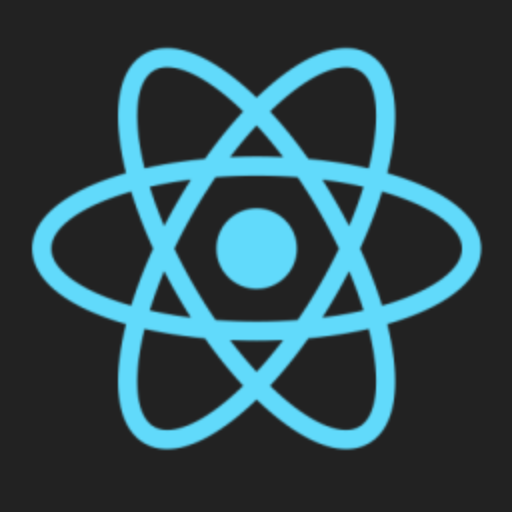React-AI-powered React guidance
AI-powered React development assistant
👤 Build a full login screen with password recovery
⭐️ Transform this UI design into React code
🪲 Find any bug or improvement in my code
💡 Teach me a useful skill or trick in React
Related Tools
Load More
React Expert
Expert React JS developer offering in-depth advice and solutions

ReactJs Expert
Build beautiful, efficient React apps. Ask me anything, from basics to best practices.

React Expert
An expert in React, providing guidance on concepts, best practices, and code troubleshooting.

React Native
Experienced Expo & React Native programmer, teaching like a professor.

React.js expert
GPT trained on React.js source code

React Js Expert Developer
React JS expert with a focus on practical coding solutions, using uploaded documentation for accuracy.
20.0 / 5 (200 votes)
Introduction to React
React is a popular JavaScript library developed by Facebook for building user interfaces, particularly for single-page applications where data needs to be dynamically updated without requiring a page reload. React allows developers to create large web applications that can update and render efficiently in response to data changes. It achieves this through its component-based architecture and a virtual DOM (Document Object Model) that optimizes updates, ensuring high performance. The design purpose of React is to enable developers to build fast, scalable, and simple user interfaces for web applications.

Main Functions of React
Component-Based Architecture
Example
In a social media app, different sections like the header, sidebar, feed, and footer can be developed as separate components. Each component manages its own state and lifecycle.
Scenario
A news website uses React components to build sections like news articles, advertisements, and user comments. Each section can be updated independently, improving maintainability and scalability.
Virtual DOM
Example
In an e-commerce site, when a user adds an item to the cart, only the cart component updates, not the entire page. React's virtual DOM ensures that only the necessary parts of the real DOM are changed.
Scenario
A financial dashboard that shows live stock prices. React updates only the changing prices rather than re-rendering the entire dashboard, leading to better performance and user experience.
Declarative UI
Example
A music streaming app where the UI components are described in a way that expresses what the UI should look like for any given state. React handles updating the UI when the state changes.
Scenario
A task management app where tasks are displayed based on their status (completed, in-progress, pending). The declarative nature of React makes it straightforward to render the correct task list based on the application's state.
Ideal Users of React
Front-End Developers
Front-end developers benefit from React's ability to create reusable UI components, which simplifies the development process and enhances productivity. The component-based architecture makes it easy to manage and maintain code, especially in large applications.
Startups and Small Businesses
Startups and small businesses that need to build scalable and maintainable web applications quickly can leverage React. Its efficient rendering, ease of integration with other libraries, and strong community support make it an excellent choice for building MVPs (Minimum Viable Products) and scalable solutions.

How to Use React
1
Visit aichatonline.org for a free trial without login, also no need for ChatGPT Plus.
2
Ensure you have Node.js and npm installed on your machine. These are prerequisites for creating and managing React projects.
3
Create a new React project by running the command `npx create-react-app my-app` in your terminal. This will set up a new project with all necessary configurations.
4
Navigate into your project directory with `cd my-app` and start the development server using `npm start`. Your default browser will open with the application running at `http://localhost:3000`.
5
Begin developing your application by editing the `src/App.js` file. Use components to structure your UI, and manage state with hooks like `useState` and `useEffect` for dynamic behavior.
Try other advanced and practical GPTs
Trends Analyst
AI-powered insights from Google Trends

Python Unit Test Expert
AI-powered comprehensive unit testing tool

Thomas
AI-powered language and cultural coach

Ecommerce Website Optimizer
AI-powered CRO for your Ecommerce Success

Ecommerce Product Research Expert
AI-powered insights for ecommerce success

ochyaiNote
AI-powered content creation and research tool

Kaan AI
Empower Your Digital Journey with AI

판매왕 - 영업 / 판매 / 제품
AI-powered product listings for second-hand sales.

Skript Generator
AI-Powered Scripts for Short-Form Video Success

Super Sports Predictor
AI-Powered Football Match Predictions
Issue Analyst
AI-powered problem analysis and solutions

Cheat Sheet Maker
AI-Powered Cheat Sheets Made Easy

- Web Development
- UI Design
- Performance Optimization
- State Management
- Component Architecture
Detailed Q&A about React
What is React?
React is a JavaScript library for building user interfaces, particularly single-page applications, where dynamic content changes without refreshing the page.
How do I manage state in React?
State in React can be managed using the `useState` hook for local component state or the `useReducer` hook for more complex state logic. For global state management, libraries like Redux or Context API can be used.
What are React components?
React components are the building blocks of a React application. They are reusable pieces of UI that can be functional (using functions) or class-based (using ES6 classes). Components can manage their own state and lifecycle.
How does React's virtual DOM work?
React's virtual DOM is a lightweight representation of the actual DOM. React keeps this virtual DOM in memory and, when changes occur, it efficiently updates the real DOM by only modifying the elements that have changed.
What are hooks in React?
Hooks are functions that let you use state and other React features in functional components. The most commonly used hooks are `useState` for state management and `useEffect` for side effects like data fetching.